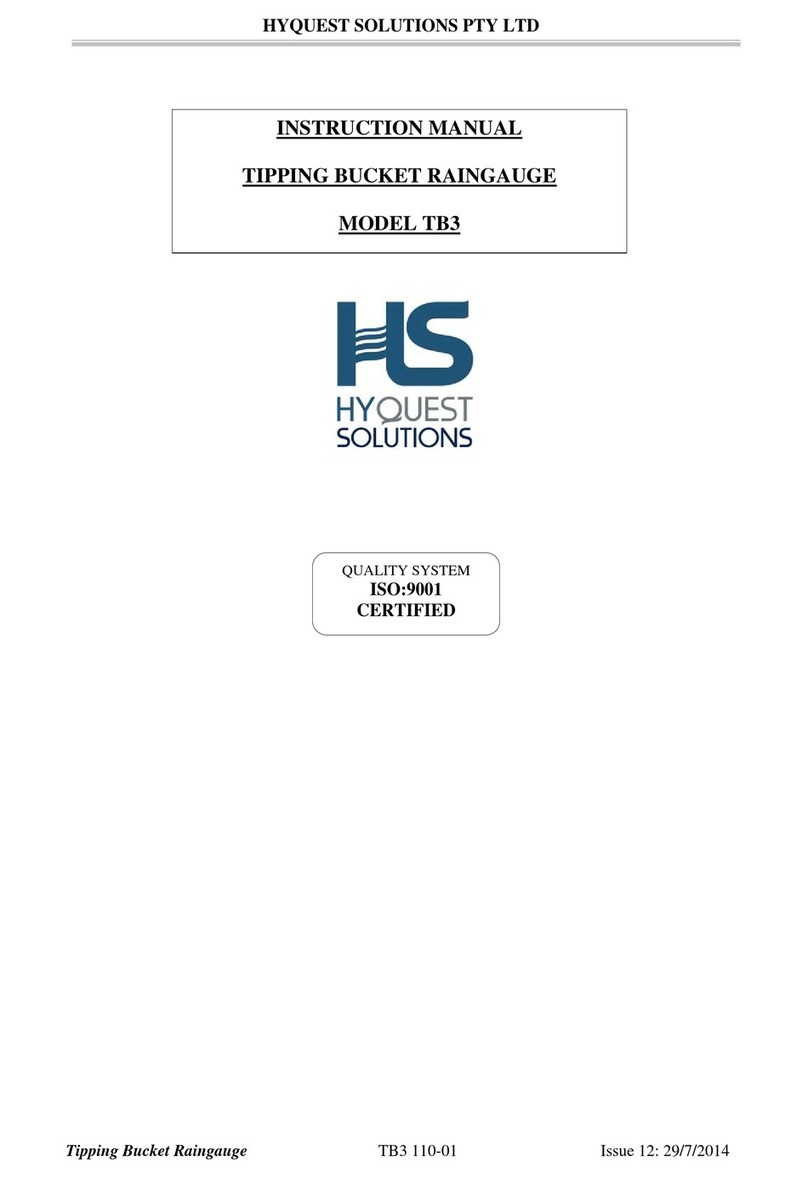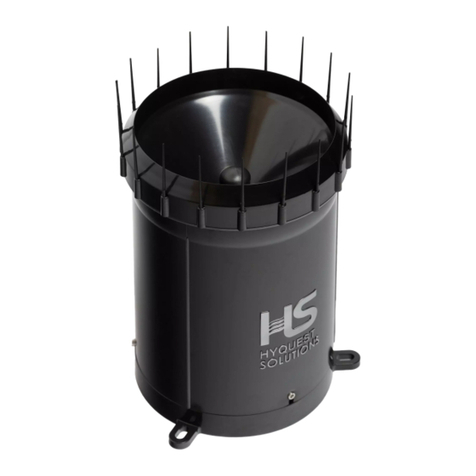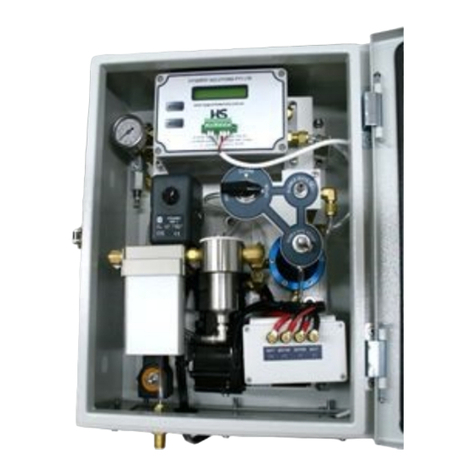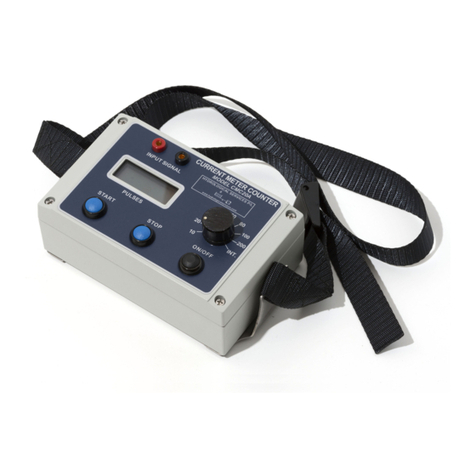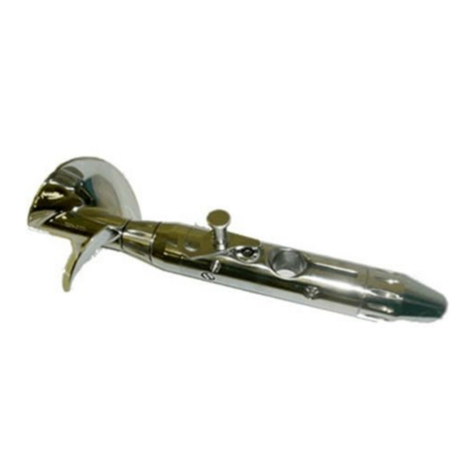
© 2022 HyQuest Solutions 6
Introduction
1Introduction
Thank you for choosing our product. We hope you will enjoy using the device.
HyQuest Solutions manufactures, sells, installs and operates quality instrumentation, data loggers and communication
technology. Products are designed with passion for environmental monitoring and with a deep understanding of the
quality, accuracy and robustness needed to fulfil the requirements of measurement practitioners in the field.
The present User Manual will help you understand, install and deploy the device. If, however, you feel that a particular
information is missing, incomplete or confusing, please do not hesitate to contact us for further support!
The HS PreciBal is a precipitation gauge based on a weighing principle with totalisation collecting principle. The amount
and the intensity of rainfall is determined by collecting liquid, mixed and solid precipitation in a bucket and by the
continuous measuring of weight increments. Sophisticated algorithms are implemented to suppress impact of
temperature fluctuations, vibrations caused by wind, or evaporation.
The heated version is equipped with a rim heater to prevent snow accumulation on the rim and to avoid snow capping
and/or ice accretion inside the rim which could result in the decrease of catching area.
An antifreeze such as propylene glycol is used to decrease the freezing point when collecting solid precipitation.
Propylene glycol is a water-based, non-toxic Polymer to be used in totalisator weighing precipitation gauges that are
especially used for collecting mixed and solid precipitation. The collected solid precipitation will turn from solid into liquid
by the decreased freezing point instead of using electrical energy as usually required for heated tipping bucket gauges.
The use of an antifreeze allows for lower power consumption in locations where there is no mains power, but which are
powered by batteries or solar panels. This combination of antifreeze and heating is applicable, for example, at locations at
higher altitudes with moderately humid ambient conditions. With this intelligent power supply to heat the rim at low
power consumption, the formation of ice build-up and snow caps is prevented.
Note: It is not required to add synthetic oil on top of the pre-filled mix of antifreeze and water.
In general, the model PreciBal 314 with its wider orifice is ideal for high mountain application with or without utilizing the
rim heater.
§
Measurements and Data Processing
§
Interfaces
§
Models and Catching Areas
§
Measurement of Precipitation Amount
§
Generating Pulses on the Contact Output
§
Measurement of Rain Intensity
§
Measurement of Bucket Content
§
Measurement of Temperature
1.1 Measurements and Data Processing
Principal measurements provided by HS PreciBal are:
§
Amount of precipitation registered since previous reading
§
Total amount of precipitation (since power-on)
§
Amount of precipitation registered during current or previous precipitation
§
Precipitation intensity
§
Temperature (internal or ambient, depending on configuration)
§
Weight of the bucket content
§
Status values (e.g. heater on/off, 80% of bucket capacity reached
The measurement of the precipitation amount is based on continuously measuring the weight of the bucket content. One
measurement cycle takes 10 seconds. At the end of each cycle all measured values are updated and prepared to be sent
using a communication protocol. Any value can be read in any period greater or equal 10 seconds. Because of the
algorithm implemented it can take up to 120 seconds to register complete amounts of precipitation fallen into the bucket,
mainly depending on precipitation intensity and wind.
1.2 Interfaces
PreciBal is equipped with the SDI-12 version 1.4 serial interface, RS 485 and a contact voltage-free pulse output for
emulation of a tipping-bucket rain gauge. RS-485 various protocols can be used, e.g. MODBUS RTU, MODBUS ASCII. For
comfortable maintenance work the Bluetooth LE and USB-over-Bluetooth interface is available.
6
6
7
7
8
8
8
8

